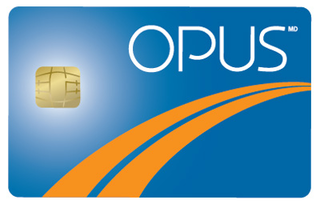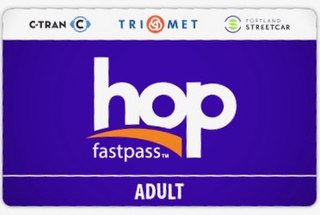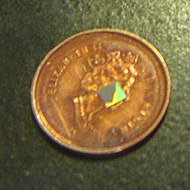
A smart card (SC), chip card, or integrated circuit card, is a card used to control access to a resource. It is typically a plastic credit card-sized card with an embedded integrated circuit (IC) chip. Many smart cards include a pattern of metal contacts to electrically connect to the internal chip. Others are contactless, and some are both. Smart cards can provide personal identification, authentication, data storage, and application processing. Applications include identification, financial, public transit, computer security, schools, and healthcare. Smart cards may provide strong security authentication for single sign-on (SSO) within organizations. Numerous nations have deployed smart cards throughout their populations.
ISO/IEC 7816 is an international standard related to electronic identification cards with contacts, especially smart cards, and more recently, contactless mobile devices, managed jointly by the International Organization for Standardization (ISO) and the International Electrotechnical Commission (IEC).
ISO/IEC 14443Identification cards -- Contactless integrated circuit cards -- Proximity cards is an international standard that defines proximity cards used for identification, and the transmission protocols for communicating with it.

A proximity card or prox card also known as a key card or keycard is a contactless smart card which can be read without inserting it into a reader device, as required by earlier magnetic stripe cards such as credit cards and contact type smart cards. The proximity cards are part of the contactless card technologies. Held near an electronic reader for a moment they enable the identification of an encoded number. The reader usually produces a beep or other sound to indicate the card has been read.

Near-field communication (NFC) is a set of communication protocols that enables communication between two electronic devices over a distance of 4 centimetres (1.6 in) or less. NFC offers a low-speed connection through a simple setup that can be used for the bootstrapping of capable wireless connections. Like other proximity card technologies, NFC is based on inductive coupling between two electromagnetic coils present on a NFC-enabled device such as a smartphone. NFC communicating in one or both directions uses a frequency of 13.56 MHz in the globally available unlicensed radio frequency ISM band, compliant with the ISO/IEC 18000-3 air interface standard at data rates ranging from 106 to 848 kbit/s.

EMV is a payment method based on a technical standard for smart payment cards and for payment terminals and automated teller machines which can accept them. EMV stands for "Europay, Mastercard, and Visa", the three companies that created the standard.

MIFARE is a series of integrated circuit (IC) chips used in contactless smart cards and proximity cards.
FeliCa is a contactless RFID smart card system from Sony in Japan, primarily used in electronic money cards. The name stands for Felicity Card. First utilized in the Octopus card system in Hong Kong, the technology is used in a variety of cards also in countries such as Singapore, Japan, Indonesia, Macau, the Philippines and the United States.

Payment cards are part of a payment system issued by financial institutions, such as a bank, to a customer that enables its owner to access the funds in the customer's designated bank accounts, or through a credit account and make payments by electronic transfer with a payment terminal and access automated teller machines (ATMs). Such cards are known by a variety of names, including bank cards, ATM cards, client cards, key cards or cash cards.
A card reader is a data input device that reads data from a card-shaped storage medium and provides the data to a computer. Card readers can acquire data from a card via a number of methods, including: optical scanning of printed text or barcodes or holes on punched cards, electrical signals from connections made or interrupted by a card's punched holes or embedded circuitry, or electronic devices that can read plastic cards embedded with either a magnetic strip, computer chip, RFID chip, or another storage medium.
CEPAS, the Specification for Contactless e-Purse Application, is a Singaporean specification for an electronic money smart card. The specification was prepared by the Cards and Personnel Identification Technical Committee (CPITC), under the purview of the IT Standard Committee of Singapore (ITSCS). It has been gazetted as Singapore Standard SS 518 by Enterprise Singapore. CEPAS has been deployed island-wide, replacing the previous original EZ-Link card effective 1 October 2009.

Contactless payment systems are credit cards and debit cards, key fobs, smart cards, or other devices, including smartphones and other mobile devices, that use radio-frequency identification (RFID) or near-field communication (NFC) for making secure payments. The embedded integrated circuit chip and antenna enable consumers to wave their card, fob, or handheld device over a reader at the Point-of-sale terminal. Contactless payments are made in close physical proximity, unlike other types of mobile payments which use broad-area cellular or Wi-Fi networks and do not involve close physical proximity.
A datacard is an electronic card for data operations.
Calypso is an international electronic ticketing standard for microprocessor contactless smart cards, originally designed by a group of transit operators from 11 countries including Belgium, Canada, France, Germany, Italy, Latvia, México, Portugal and others. It ensures multi-sources of compatible products, and allows for interoperability between several transport operators in the same area.

OPUS is a rechargeable, dual interface (contact/contactless) stored-value smart card using the Calypso Standard and is used by major public transit operators in Greater Montreal and Quebec City, Quebec, Canada. It complies with the ISO/IEC 14443 standard for smartcards and can be read by smartphones with an NFC antenna.
CIPURSE is an open security standard for transit fare collection systems. It makes use of smart card technologies and additional security measures.
Istanbulkart is a contactless smart card for fare payment on public transport in Istanbul, Turkey. It was introduced on March 23, 2009 in addition to the Akbil, an integrated electronic ticket system which was eventually phased out in 2015. The card was developed and put into practice by the information technology company Belbim of the Metropolitan Municipality.
The term digital card can refer to a physical item, such as a memory card on a camera, or, increasingly since 2017, to the digital content hosted as a virtual card or cloud card, as a digital virtual representation of a physical card. They share a common purpose: Identity Management, Credit card, Debit card or driver license. A non-physical digital card, unlike a Magnetic stripe card can emulate (imitate) any kind of card.

Hop Fastpass is a contactless smart card for public transit fare payment on most transit modes in the Portland, Oregon, metropolitan area including MAX Light Rail, WES commuter rail, Portland Streetcar, The Vine, and all TriMet and C-TRAN buses. An initial release to the general public began on July 5, 2017, with the official launch on July 17. The program is managed by TriMet.
On Track Innovations Ltd. (OTI) founded in 1990, is a global company that focuses on creating contactless payment solutions. OTI does this through the use of NFC technologies.














